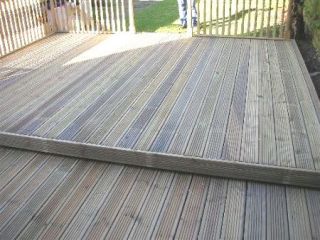There are basically two types of deck, a ground level deck or an elevated deck. You can have a combination of the two if necessary. There is much conflicting advise over decks as to which materials should be used and what surfaces they can be built on. Here we always go for over engineering rather than under engineering as we believe that if a job is worth doing it is worth doing right in the first place. There are several factors that will determine how you build your deck and if it is being attached to a property then much digging out may be required to get the deck to the correct level.
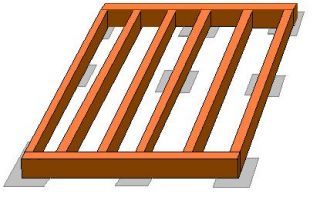
This is how a ground level deck would be constructed, it is made from studs that measure 150mm * 50mm. The deck is built onto concrete paving slabs which should be a minimum size of 600mm * 600mm * 50mm. The slabs should be bedded on either mortar or sand. The paving slabs should be spaced out at no more than 1800mm centre's. The deck studs should be spaced out at no more than 400mm centre's. Landscaping fabric is required underneath the deck to prevent the growth of weeds.
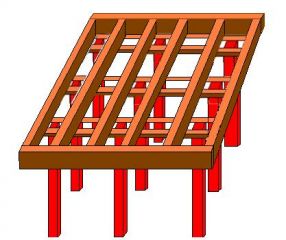
An elevated deck would look like this. The decking posts are spaced out at no more than 1800mm centre's. Attached to the top of these are the bearers, which are 150mm * 50mm. Two bearers should be used for each post and then the studs for the deck sit on top of the bearers and are securely fastened. The studs are positioned at no more then 400mm centre's and if you intend joining the decking boards over a joist then two joists will be required side by side, if you try and screw two boards into one joist the boards will split.
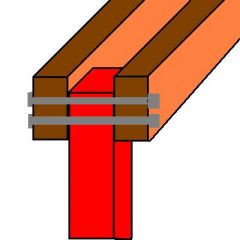
This diagram shows how the deck bearer is connected to the decking post. It is bolted using two rustproof M12 bolts that are 220mm in length. The decking posts are 100mm * 100mm and the timbers for the bearer are 150mm * 50mm each.
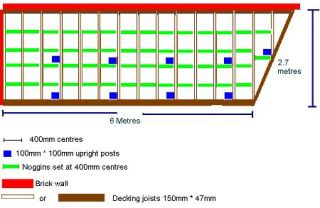
Draw a plan of the proposed deck to scale and then it is easier to work out how much materials you need. Don't worry you will not need this amount of noggins on your deck, unless it is a really large deck. This is only an example, you will not need noggins at 400mm centre's unless you are building a huge deck.
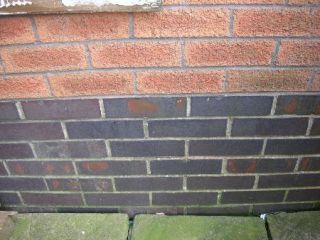
Where a deck is to be attached to a property it should be designed so that the top level of the deck is at least 150mm below the level of the damp proof course in order to meet the current building regulations. In reality this is often ignored, but the level of the deck must never be higher than the damp proof course.
The decking structure should not be fastened directly to the fabric of the house, there should be at least a 10mm gap between the structure and the house.
This can be achieved by using several stainless steel washers. You can see that damp proof course level in this modern house as it is where the bricks change colour. The bricks at the bottom are engineering bricks and act as an effective damp proof course.
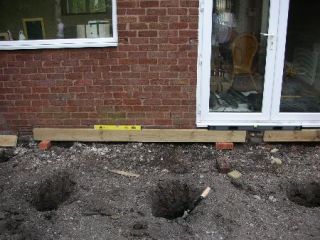
Ensure that any air vents for the property are not blocked by the ledger as this will cause the timber on the inside of the house to rot. Here you can see that I have cut the ledger so that the vents will not be blocked. The decking should slope away from the house at a fall of 1:100 and so you need to drop the deck by 10mm for every 1 metre of the deck. So if your deck was 3 metres you would need it to be lower by 30mm at the end furthest away from the house.
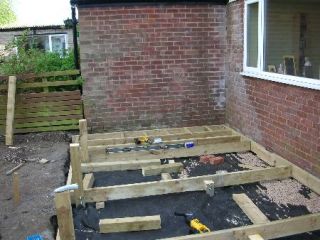
Any vegetation or trees / shrubs should be cleared from the area and the ground should be levelled. The ground should slope slightly towards the outer edge (away from the property) of the decking to allow adequate drainage.
Landscaping fabric should be spread on the ground to prevent the growth of weeds and then this should be covered with gravel to prevent the wind from lifting it. There should be a gap of roughly 50mm between the gravel and the decking frame to allow air to circulate.
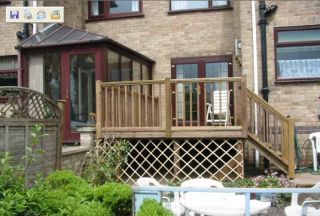
Elevated decks that are more than 600mm from the floor should be designed by a structural engineer or builder. Elevated decks may require planning permission
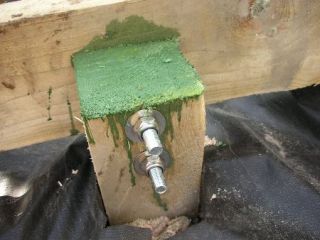
The timber should be pressure treated and suitable for the purpose that is intended, non treated timber should not be used. All screws, bolts and fasteners should be rust proof and be suitable for outdoor use. All cut ends must be treated with a suitable wood preserver.
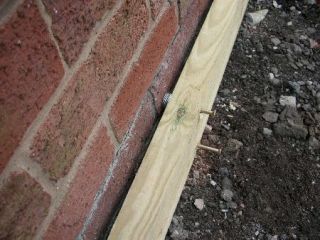
The deck must not come into contact with the property and should be spaced away from the property by at least 10mm, this can be achieved by using stainless steel washers between the ledger and the wall of the property. The decking boards should also be set at least 10mm away from the property. This is to prevent the timber from becoming wet and it soaking into the brickwork.



